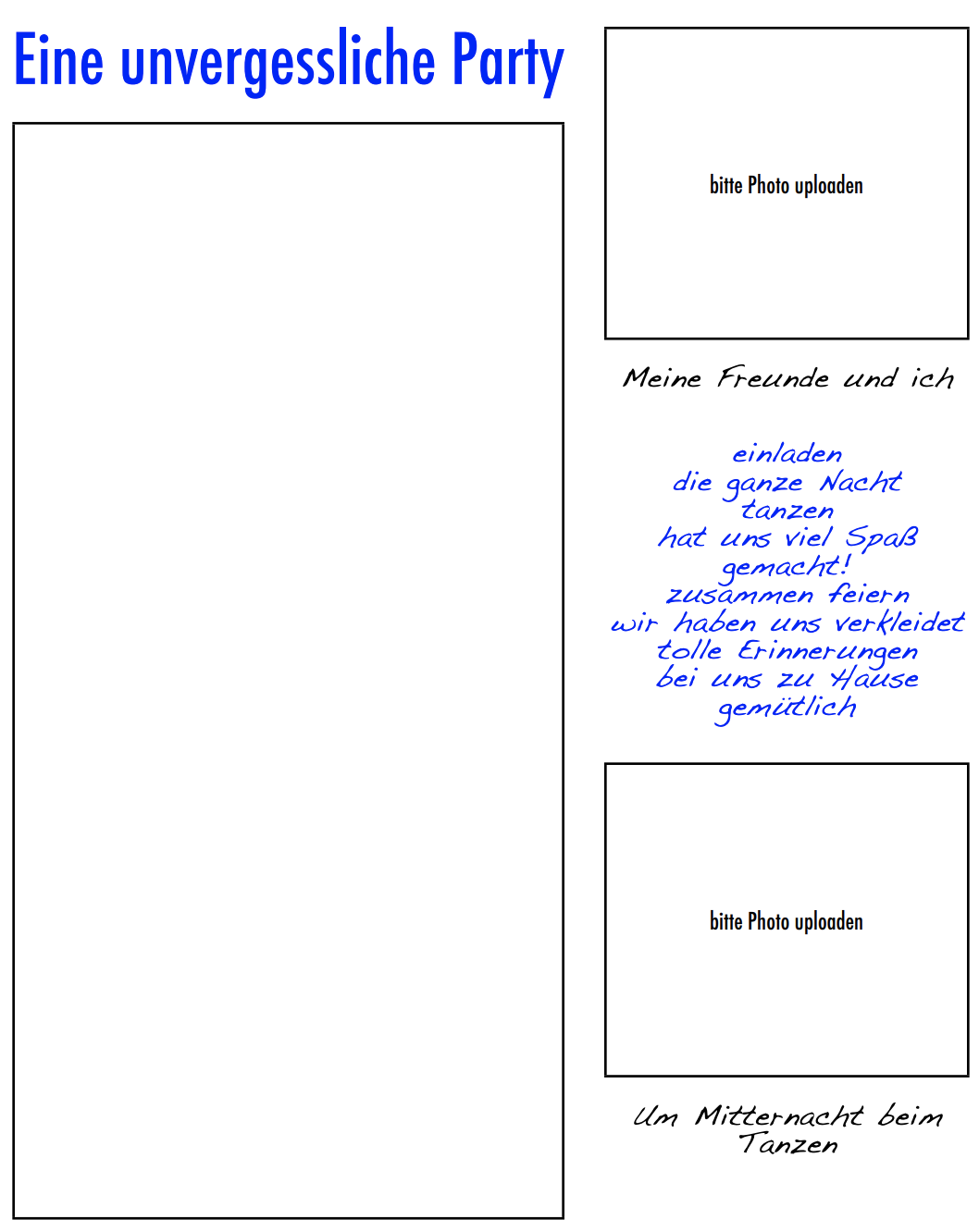5.4: Man soll die Feste feiern, wie sie fallen.
- Page ID
- 116539
Aktivität 21. Harald: Wie und wo kann man gut feiern?
Watch Harald’s Sprache im Kontext video „Feiern in Austin“ and answer the following questions. What does he say about Oktoberfest? Which cities in the world does he think are the best places to party?
A. Was erzählt Harald über das Oktoberfest?
• Geht Harald gern aufs Oktoberfest? Warum/warum nicht?
• Wann findet das Oktoberfest statt?
• Wer geht aufs Oktoberfest und wer geht nicht?
B. In welchen Städten kann man, laut Harald, gut feiern?
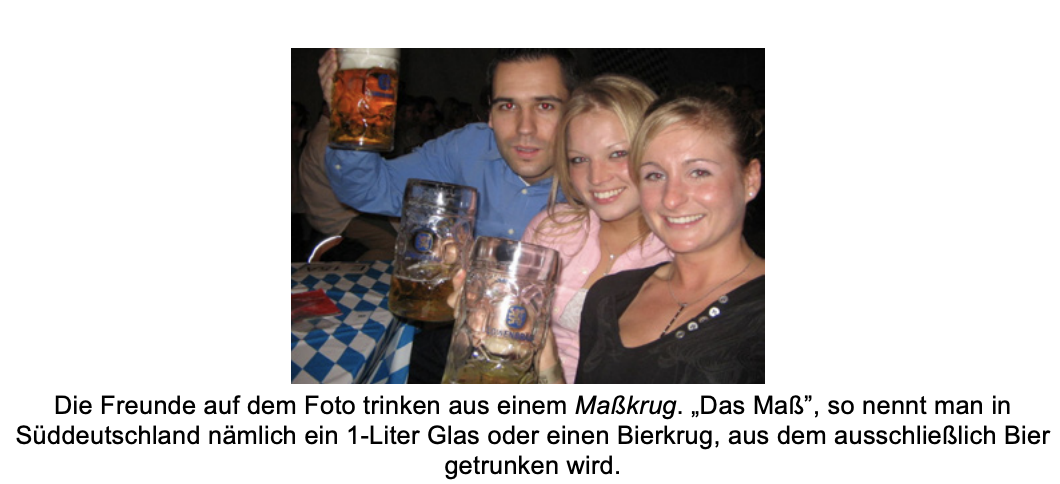
Aktivität 22. Peter und Mario: Feiertage in Bayern
Watch the two Sprache im Kontext videos with Peter and Mario and listen for the following information: How and why does Peter think his family’s Christmas celebration is different from how other Germans celebrate it? What does Mario say about holidays in Southern and Northern Germany?
A. Peter feiert Weihnachten
1. Woher stammt Peters Familie ursprünglich? Seit wann lebt er in Deutschland?
2. An welchem Tag feiert Peters Familie Weihnachten? Und wann schmückt seine Familie den Tannenbaum?
3. Was isst Peters Familie an Heiligabend? Kreisen Sie alle Speisen ein, die Peters Familie isst:
Weißwurst
Brezeln
Fisch (besonders Karpfen)
Gans (in Norddeutschland)
süßer Senf
Maultaschen (a pasta filled with spinach and/or meat)
Sauerkrautsalat mit Pilzen
Rote-Beete-Suppe
4. Was passiert an Heiligabend? Stellen Sie die folgenden Aktivitäten in die richtige Reihenfolge:
__________ Man isst Abendessen.
__________ Man packt die Geschenke aus (die Bescherung).
__________ Man macht alles sauber (spült das Geschirr ab).
__________ Die Familie singt Weihnachtslieder.
5. Was essen die Bayern (laut Peter) typischerweise zu Weihnachten? Und was isst man in Norddeutschland?
Zum Nachdenken: Are holidays determined in your country state by state (or county by county) or at the national level? What does Mario say is the relationship between being Catholic (as a state) and the number of holidays celebrated? Which other two holidays does Mario mention? Why is it important to rest on Christmas night, according to Mario (very tonguein-cheek, of course!)?
B. Mario: deutsche Feiertage: Which word goes where?
Complete the text with the words in the box to make it meaningful again.

In Deutschland sind ______________________ Ländersache. Das heißt, dass jedes Bundesland seine eigenen Feiertage bestimmen ______________________. Hier zum Beispiel, in Bayern, gibt es die meisten Feiertage. ______________________ an der Zahl. Im nördlichen ______________________, da es nicht so streng katholisch ist wie hier, gibt es weniger. Ich glaube, es sind um die fünf Feiertage. Ostern zum Beispiel wird hier ziemlich ______________________ gefeiert, gerade im südlichen Teil von Bayern, und wir haben da auch noch zwei ______________________ Ferien. Die Studenten leider nicht mehr, aber dafür haben wir kurz davor die Semesterferien. Zudem gibt es noch Feiertage, den Tag der Deutschen Einheit ______________________, dieser ist bestimmt worden, als Ost- – also die ehemalige DDR Ostdeutschland – und die BRD, die Bundesrepublik Deutschland ______________________ beziehungsweise ______________________ zusammengeführt (connected) wurden.
Weihnachten feiern wir ______________________. Am 25. 12. und 26. 12. ist ausschließlich der erste und zweite ______________________. Dann besuchen wir unsere Verwandten, Bekannten und gute ______________________. Aber wir gehen gewöhnlich am 24. 12. in die Kirche, ungefähr um ____________________________ Uhr, dann essen wir mit Verwandten zu Abend, und dann gibt es ______________________. Das heißt, jeder verteilt an den anderen Verwandten die Geschenke, und danach sitzt man noch beisammen, trinkt und isst ______________________. Und geht dann ins Bett, um am nächsten Tag wieder bei der Oma oder bei anderen Verwandten weiteressen zu können.
Aktivität 23. Nikolaustag
Shortly before Christmas, most German children have another reason to celebrate. December 6 is Nikolaustag, in honor of Saint Nicholas, the fourth-century bishop. Read a brief description of how Jasmin used to celebrate this day when she was little. Does your family celebrate this holiday? If yes, do you celebrate it the same way as Jasmin?
A. Vor dem Lesen
As a first step in the reading process, scan the text and underline all the nouns and all the verbs. These are so-called content words that help you focus on the meaning of the text. Based on the words you underlined, what do you think are some key points Jasmin raises?
B. Fragen zum Text
a. Who were expecting the arrival of Nikolaus? When did he usually arrive?
b. What was done in preparation for his arrival?
c. Are Santa Clause, der Weihnachtsmann and das Christkind the same? If yes, how so? If not, how are they different (across the different cultures, across the different holidays, etc.)? You will have to research this a bit on the Internet! Hint #1: part of the answer depends on a distinction between Northern and Southern Germany. Hint #2: Jasmin’s family is from the North, but her dad is from the South, and they mixed traditions a bit.
d. What were the two possible outcomes of Nikolaus’ visit?
If children were __________ the previous year, they ...
If children were __________ the previous year, they...

Aktivität 24. Stille Nacht
Did you know that one of the most popular “American“ Christmas carols was originally written in the early 19th century by an Austrian priest – Joseph Mohr, from Salzburg – and set to music by Franz Xaver Gruber, an Austrian elementary school teacher? This song celebrates the Christkind’s birthday on December 24. In the German-speaking countries, it is the Christkind who brings presents, which people open on Heiligabend (the evening of the 24th). His assistants are angels. There is no specific Aktivität to go with this song; just sing along and enjoy! You can hear the music on wikipedia at: http://en.wikipedia.org/wiki/Stille_Nacht
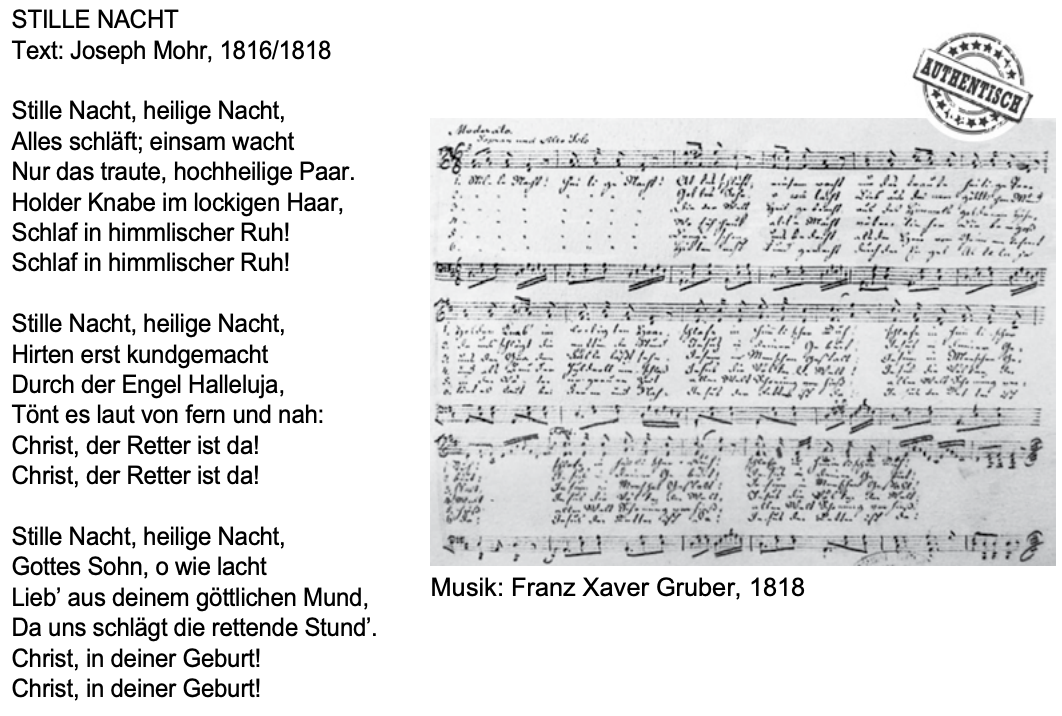
Aktivität 25. Lieder & Musik
Tommy Engel – Du bes Kölle/Du bist Köln
A very important celebration in German-speaking countries, and in certain regions, is Karneval (or Fasching). The city of Köln, especially, takes this festival very seriously. Watch the video at http://www.karnevalvideo.com/tommy-e...-koelle-video/, and look carefully at the images you see. Then, read both versions of the text below and answer the questions on the next page that help you understand Kölsch and the idea of Karneval better.
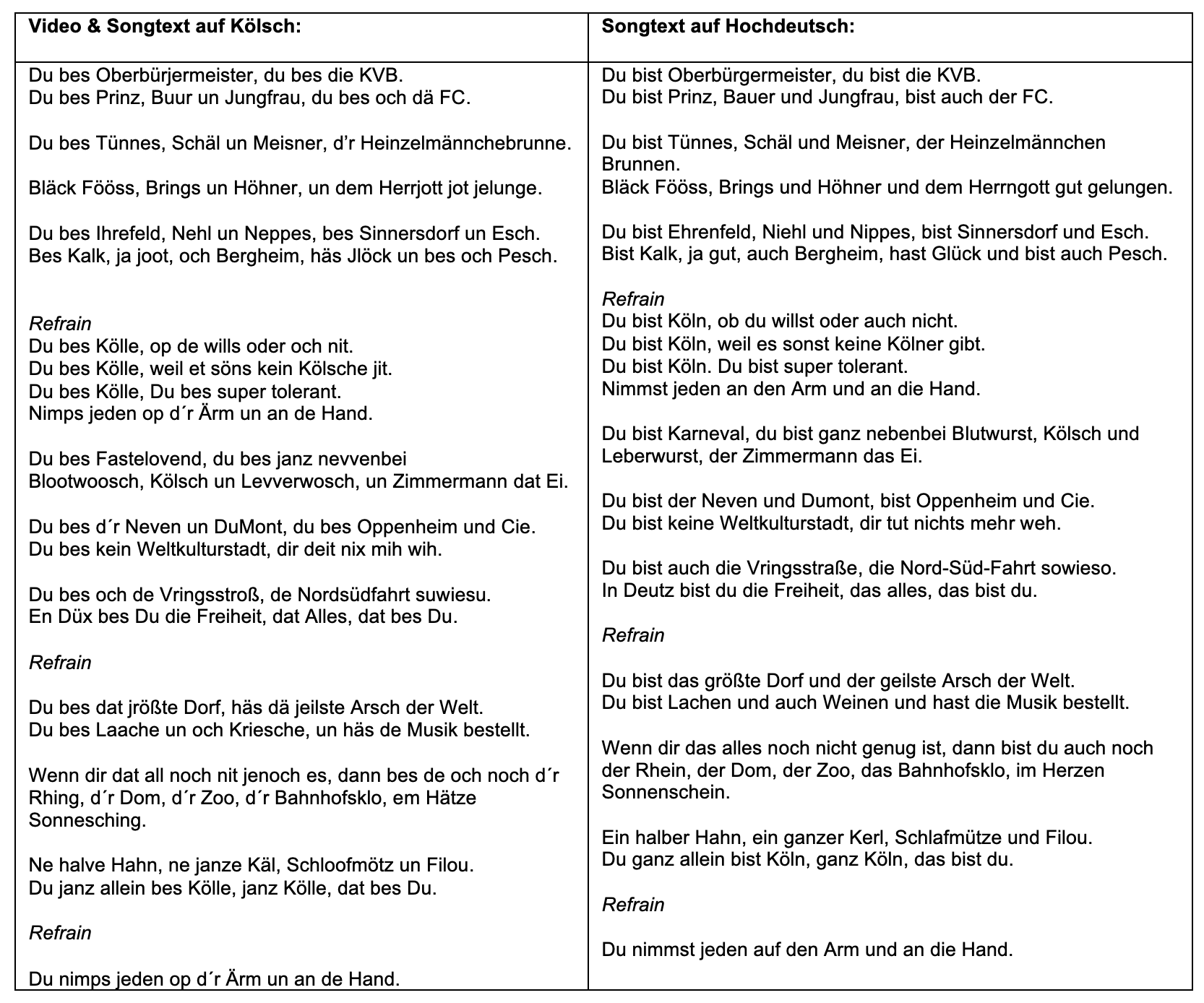
1. Fragen zum Lied
a. Compare the language in the Kölsch dialect and in “Hochdeutsch” (the German “standard” variety). What do you notice as the main differences between the two varieties? Do you have similar variation in your own language?
(LEARNING TIP: Print versions on differently colored paper or in different fonts, then cut up stanzas, mix and match!)
b. The song refers to various people as well as places. Try to organize them into these two categories. What is left over? Now find out about them—what is their relevance/importance (Bedeutung) for Köln?
| Bedeutung für Köln | |
| Orte (Places) | |
| Leute (People) | |
| Anderes (Other) |
c. How is Köln described? Create an associogram based on Köln.
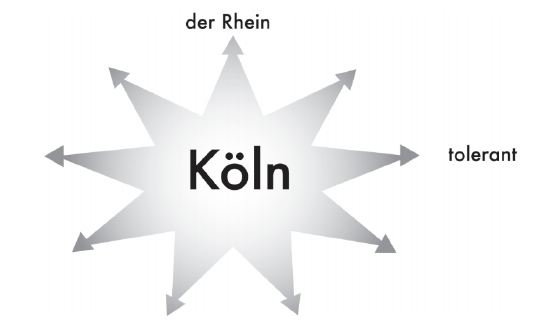
d. Create a similar associogram for your own city – what do you think of when you think of it?
2. Kreative Ecke
Write a song (one stanza) in German to describe what your hometown means to you, plugging in the words into the previous song. Bonus point if you can keep the rhythm & the rhyme!
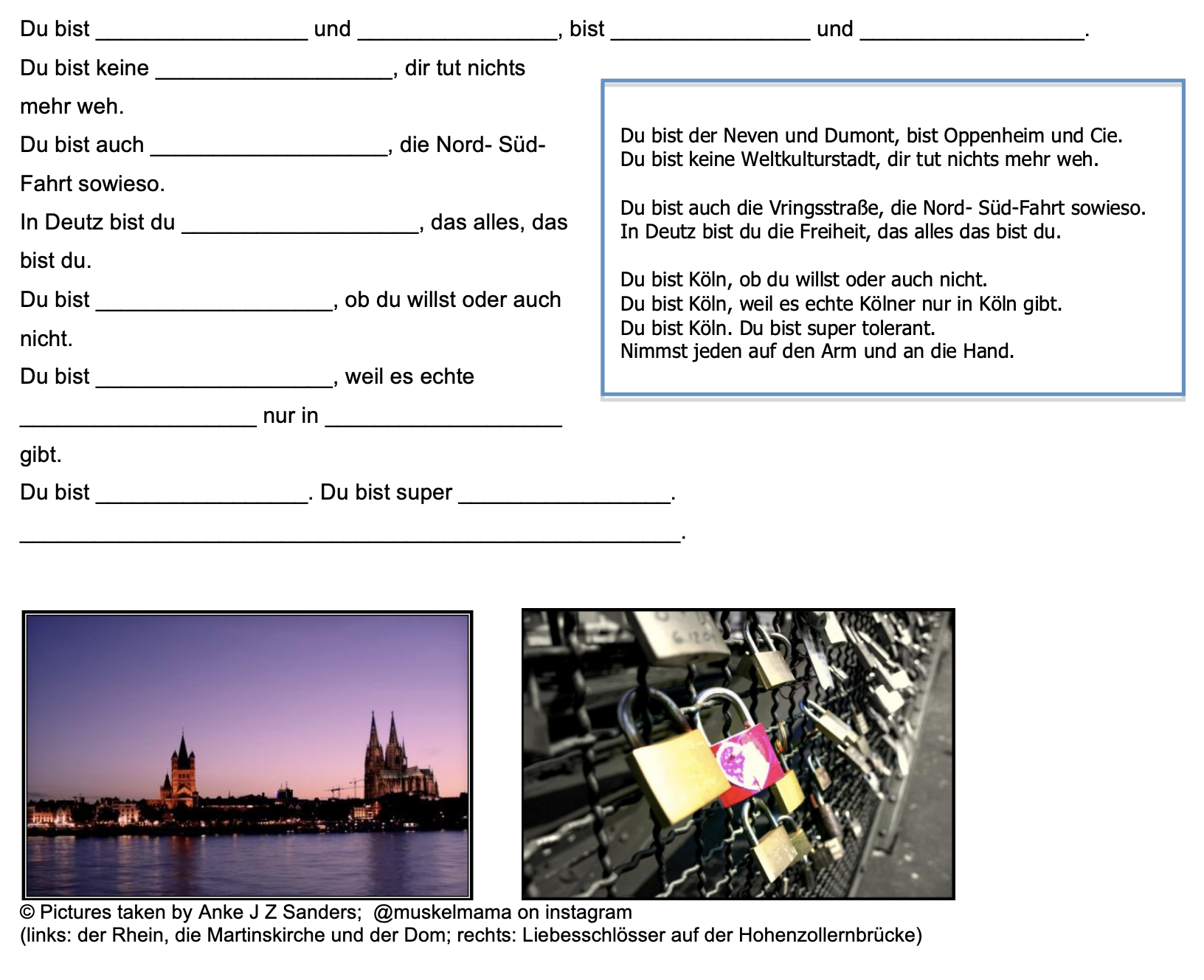
Aktivität 26. Deutsche und Amerikaner: Wie haben sie Geburtstag gefeiert?
One of the most exciting days for many people is their birthday. Different people celebrate in different ways, obviously, and apparently the differences are not across cultures, but across individuals. Watch the interview videos and take notes on how these students celebrated their birthdays the last time: With whom? What did they do at the party? What did they eat, drink, listen to?
A. Die Amerikaner haben so gefeiert ...
Hassan hat ________________________________ Geburtstag.
Das letzte Mal hat er so gefeiert:
Erin hat __________________________________ Geburtstag.
Das letzte Mal hat sie so gefeiert:
Sara hat __________________________________ Geburtstag.
Das letzte Mal hat sie so gefeiert:
B. Und die Deutschen haben so gefeiert ...
Jan hat __________________________________ Geburtstag.
Das letzte Mal hat er so „gefeiert“:
Evas Mutter hatte gerade (just had) Geburtstag.
Sie haben ihren Geburtstag so gefeiert:
Eva hat __________________________________ Geburtstag.
Sie wird (will) so feiern:
Das letzte Mal – letztes Jahr – hat sie so gefeiert:
Aktivität 27. Auf der Party
What exactly did Berna, Eva and Jan do on their birthdays? Watch Eva and Jan’s clips „Mein Geburtstag“ and Berna’s clip „Mein Lieblingsfeiertag“ and write down all the verbs they used to tell their stories.
A. Damals
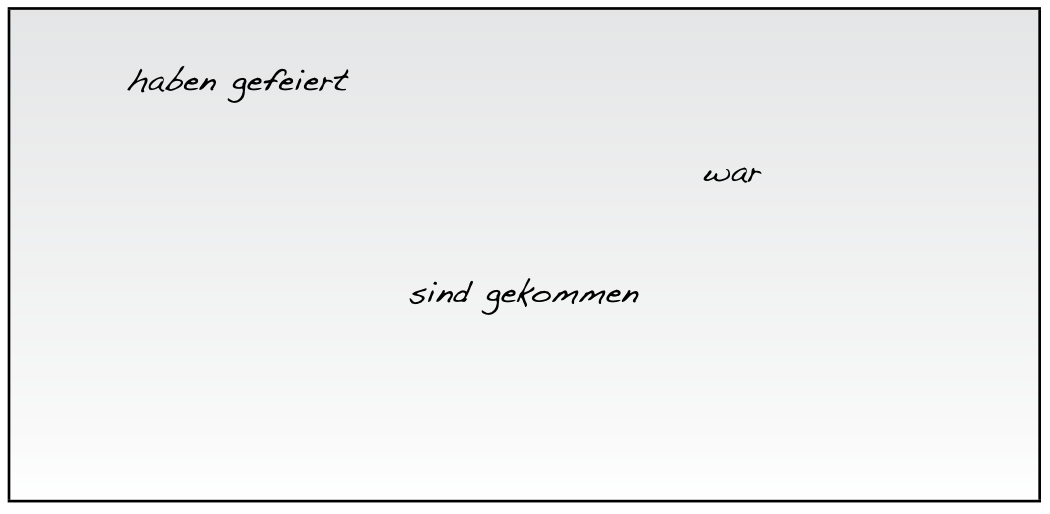
B. Später
Now listen to the part in Eva’s video in which she talks about how she was going to celebrate her birthday. Write down all the verbs Eva uses to tell her story.
C. Der Unterschied
What did you notice about the formation of the verbs to talk about the past, on one hand, and to talk about the future, on the other?
To talk about the past, you ...
To talk about the present, you ...
To talk about the future, you...
Aktivität 28. Sprache im Kontext: Mario: Mein Geburtstag
Watch Mario’s clip in which he describes how he and his friends celebrated his birthday.
A. Und alle waren da!
When is his birthday? Who all came and what did they bring?
1. Wann hat Mario Geburtstag?
2. Wie alt ist er gerade geworden?
3. Am Wochenende nach Marios Geburtstag hat man groß gefeiert. Wer hat die Party gegeben (diese Person ist „der Gastgeber”)?
4. Und was hat der Gastgeber für die Party mitgebracht?
5. Wer ist zur Party gekommen (diese Leute sind „die Gäste”)?
a. Und was haben diese Leute zur Party mitgebracht?
b. Wie hat Mario seine Party gefunden?
c. Was hat er mit seinen Gästen gemacht (angeschaut/gespielt)?
B. Und wie ist es bei Ihnen?
Now think about birthday parties for you and your friends and answer the following questions.
1. Wer gibt die Geburtstagsparty – das Geburtstagskind oder seine Freunde?
2. Was bereitet der Gastgeber/die Gastgeberin für die Party vor?
3. Was machen die Gäste für die Party?
4. Stellen Sie sich mal vor (imagine) … Sie sprechen nun mit Mario über Geburtstagspartys und er fragt:„Wie ist es bei dir?” Welche Gemeinsamkeiten (similarities) mit seiner Beschreibung können Sie fnden? Welche Unterschiede gibt es zwischend der Art (the way in which), wie er und Sie Geburtstag feiern?
5. Und dann fragt Mario:„Wie ihr feiert, ist das typisch in Amerika?” Scheiben Sie eine Antwort auf und besprechen Sie Ihre Antwort mit anderen Kommilitonen. Gibt es überhaupt einen „typisch” amerikanischen Geburtstag?
Aktivität 29. Wer hat die coolste Oma?
Use the statements to figure out whose grandmother gives them what present for their birthday and what hair color their grandmother has. You can work alone or with a partner – try to be the fastest in the class to figure out puzzle. Read the statements and mark the boxes with a ”+” if the answer is „Ja” and ”-” if the answer is „Nein”. Write your findings in the table provided below.
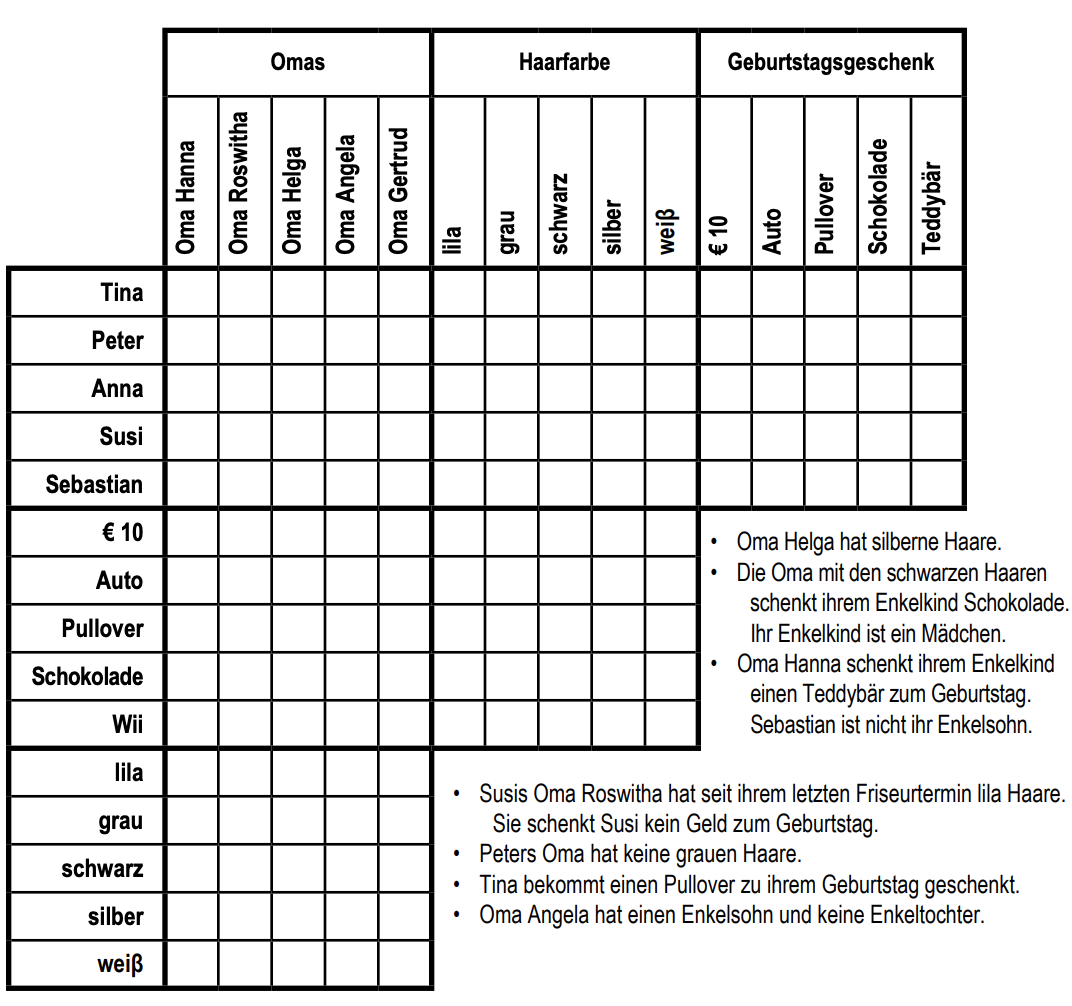
| Oma | Omas Haarfarbe | Geburtstagsgeschenk | |
| Tina | |||
| Peter | |||
| Anna | |||
| Susi | |||
| Sebastian |
Aktivität 30. Feiern an der Schule
Young German people love parties! They have massive birthday celebrations, and find any opportunity they can to have a party. Including with schoolmates and their classes. Here are two short blog entries from „Susis Bayernchronik”, in which she relates two parties she recently attended. Read the entries and answer the questions below.
| Blogeintrag #1 | Blogeintrag #2 | |
| Titel & Datum (do you recognize parts of the title words?) | ||
| Schlüsselwörter (key words) – Wörter, die ich kenne | ||
| Auf diesen Wörtern basiert das Thema des Blogs: |
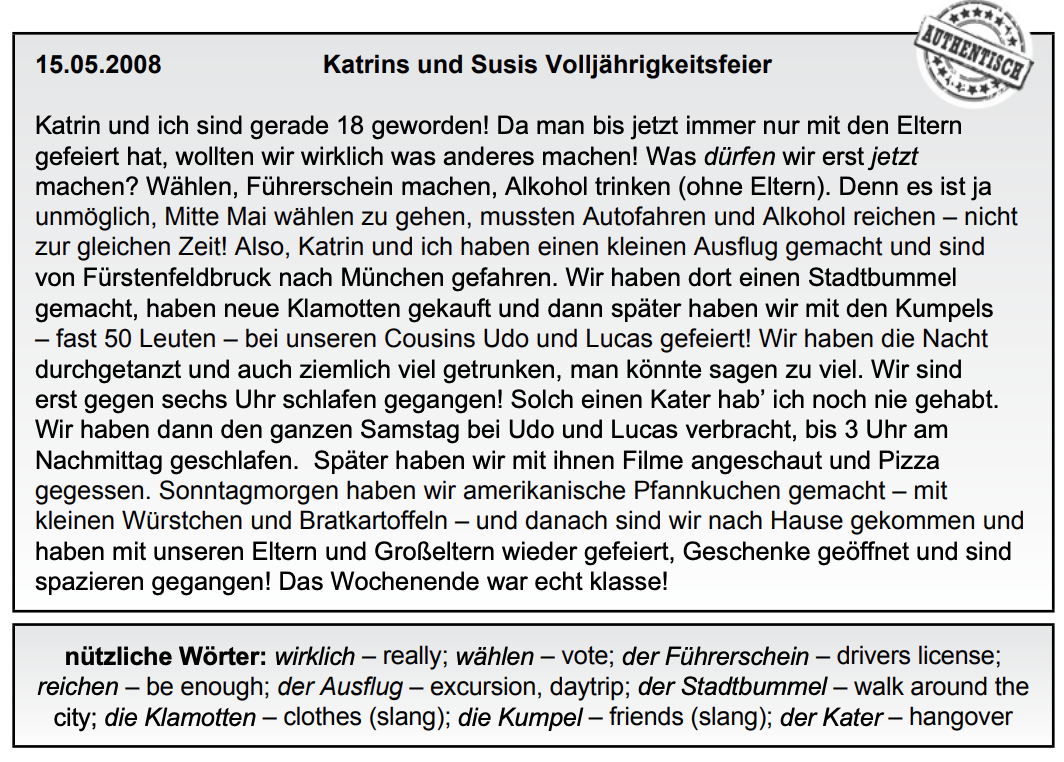
Fragen zum Text
a. What did Katrin and Susi celebrate?
b. What were the three things they were allowed to do as 18-year-olds?
c. Where do they live, and where did they go for their birthday?
d. How did they spend their birthday each day from Friday to Sunday?
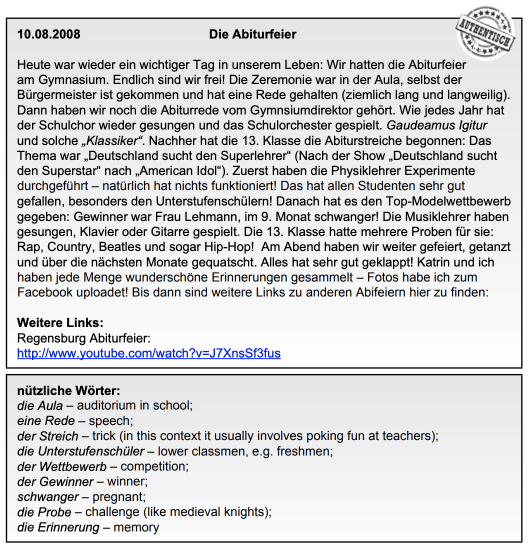

Aktivität 31. Jetzt sind Sie dran ... Ihre letzte Party
Think about the last party that you went to, then answer the following questions yourself, then use them to interview at least two of your fellow students.
Welche Aktivitäten machen Ihnen Spaß? Was war die letzte Party, auf der Sie gewesen sind? Wer hat mit Ihnen gefeiert?
Was haben Sie gefeiert? Was haben Sie alles gemacht?
Wo war die Party?
| ich | Partner #1 | Partner #2 | |
| Was war die letzte Party, auf der Sie gewesen sind? | |||
| Wer hat mit Ihnen gefeiert? | |||
| Was haben Sie gefeiert? | |||
| Was haben Sie alles gemacht? | |||
| Wo war die Party? |
Aktivität 32. Eine unvergessliche Party ...
Write a blog entry (ca 250 words) about a truly memorable party you have attended or organized. Use the information you took notes on in the previous exercise and incorporate some of the vocabulary, expressions you learned from your fellow students as well! If this party was memorable for you, make sure it is memorable for your reader as well! Spice up your description with interesting details and varied rhetorical structure as well (e.g., don’t always use the subject – verb – direct object pattern in the sentences, do ask a question of the reader, do use some exclamations, etc.).
